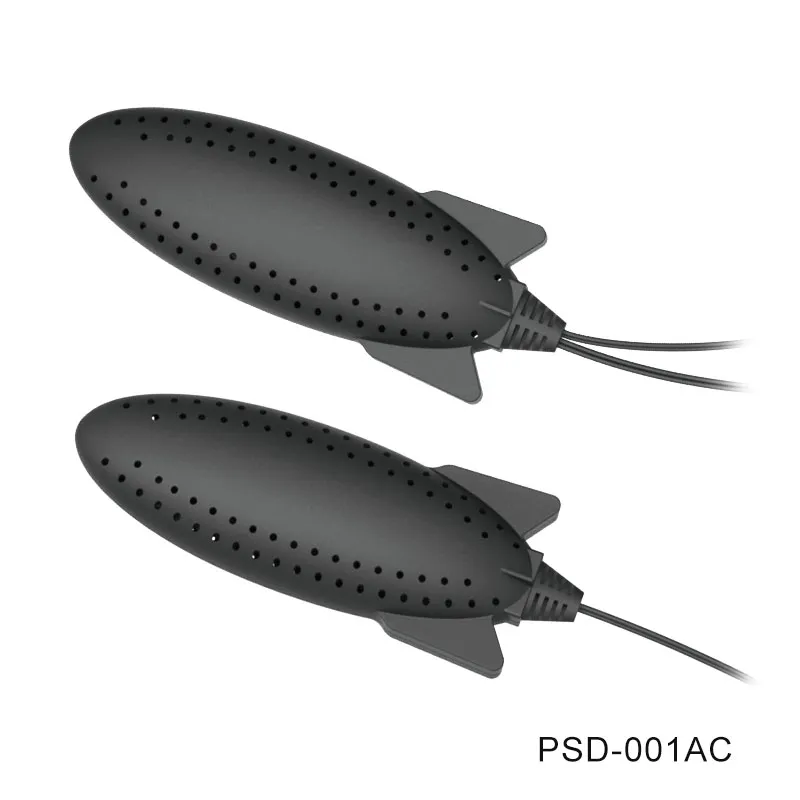Key Safety Features to Look for in a Portable Boot Dryer for Safe Operation
2024-11-15
Portable boot dryers are essential for anyone who spends time outdoors in wet or cold conditions. They help dry out footwear quickly, reduce moisture-related odors, and prolong the life of your boots. However, like any electrical appliance, boot dryers come with potential risks if not designed properly. In this blog post, we'll discuss the crucial safety features to look for in a portable boot dryer to ensure safe operation and durability, keeping both you and your boots protected.
1. Overheating Protection
Overheating is one of the most common safety risks associated with boot dryers. If a boot dryer runs for too long or becomes malfunctioning, it can overheat, which could lead to a fire hazard or damage to your boots. To prevent this, look for a dryer that includes overheating protection. This safety feature typically includes an overheat protection switch or thermal cut-off mechanism, which automatically shuts down the dryer if it exceeds a certain temperature.
The built-in thermostat or thermal sensors help regulate the heat to ensure it stays within a safe range. This feature not only prevents overheating but also protects the dryer’s components, preventing wear and tear over time. In addition to safety, overheating protection helps preserve the quality of your boots, especially delicate materials like leather, which can crack or become brittle with excessive heat.
2. Automatic Shut-Off Timer
Another vital safety feature is an automatic shut-off timer. If you’re prone to forgetting to turn off your boot dryer, an automatic shut-off function ensures that the dryer turns off after a set period of time. Many boot dryers come with a timer that can be set for 1 to 8 hours, depending on the dryer’s design and the material of your boots. This ensures that the dryer won’t continue running after the drying process is complete, preventing potential overheating and energy wastage.
For added peace of mind, some models come with smart timers that automatically adjust based on moisture detection. This can be especially useful if you’re drying particularly damp footwear or if you’ve left your boots unattended for a long period.
3. Moisture Detection Sensors
Many advanced portable boot dryers come with moisture detection sensors that detect the moisture levels in your boots and adjust the dryer’s operation accordingly. This feature ensures that the dryer is only running when necessary, preventing over-drying and excessive energy consumption. By monitoring the moisture in your boots, the dryer can automatically reduce heat or shut off once the desired drying level is reached.
Moisture sensors also help prolong the life of your boots by preventing the drying process from continuing once they are sufficiently dry. For instance, leather boots can become stiff and cracked if exposed to too much heat for too long, but with moisture sensors, this risk is minimized.
4. Fire-Resistant Housing
When it comes to electrical appliances that produce heat, the housing material is crucial to ensuring safe operation. A boot dryer should be made from fire-resistant materials to minimize the risk of fire hazards. Look for dryers with heat-resistant plastic or metal housings, which are less likely to melt, warp, or catch fire under high temperatures.
The exterior casing should be durable and able to withstand constant use without becoming damaged. A sturdy, fire-resistant housing not only improves safety but also ensures that your boot dryer will be reliable for long-term use, even under tough conditions.
5. Sturdy and Anti-Tip Base
Stability is an often-overlooked but important factor when it comes to boot dryer safety. A portable boot dryer should be equipped with a non-slip or anti-tip base to prevent it from toppling over during operation. If the dryer falls over, it could cause damage to both the appliance and your boots, or potentially expose electrical components, leading to a safety hazard.
Look for dryers with wide, rubberized feet or stable, non-slip bases that provide adequate traction and prevent the dryer from tipping, even on slippery or uneven surfaces. This feature is especially important if you plan on using the dryer in areas with high foot traffic or around pets and children.
6. High-Quality, Insulated Power Cord
A well-insulated power cord is essential for any appliance that uses electricity. The cord should be long enough to allow flexibility in where you place the dryer, but it should also be durable enough to withstand daily use without fraying or becoming damaged.
A high-quality, insulated power cord helps prevent electric shocks or short circuits, which can be hazardous. In addition, many models feature cord storage options, allowing you to neatly coil up the cord when not in use, protecting it from wear and tear and reducing the risk of tripping.
7. Safety Certifications and Compliance
Before purchasing a portable boot dryer, it’s crucial to check if it has been tested and certified by recognized safety organizations. UL (Underwriters Laboratories), ETL, and CE (Conformité Européenne) certifications are reliable indicators that the product meets safety standards for electrical appliances. These certifications confirm that the dryer has undergone rigorous testing for safety, including checks for overheating, electrical faults, and fire hazards.
By choosing a boot dryer with one of these certifications, you can be confident that the device has passed necessary safety tests and complies with strict industry regulations, providing additional peace of mind during use.
When selecting a portable boot dryer, safety should be a top priority. Look for dryers with features like overheating protection, automatic shut-off timers, moisture detection sensors, fire-resistant housings, anti-tip bases, insulated power cords, and safety certifications. These features not only protect you from potential hazards but also ensure that your dryer lasts for years, keeping your boots dry, fresh, and in excellent condition.



